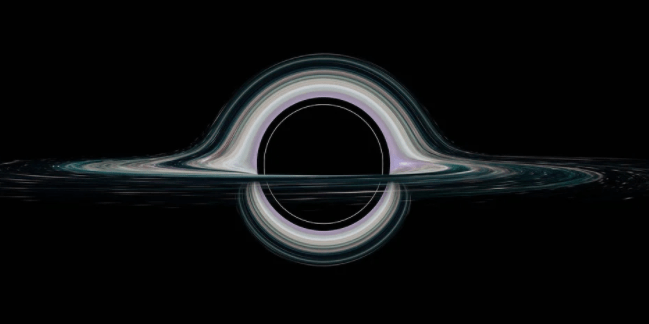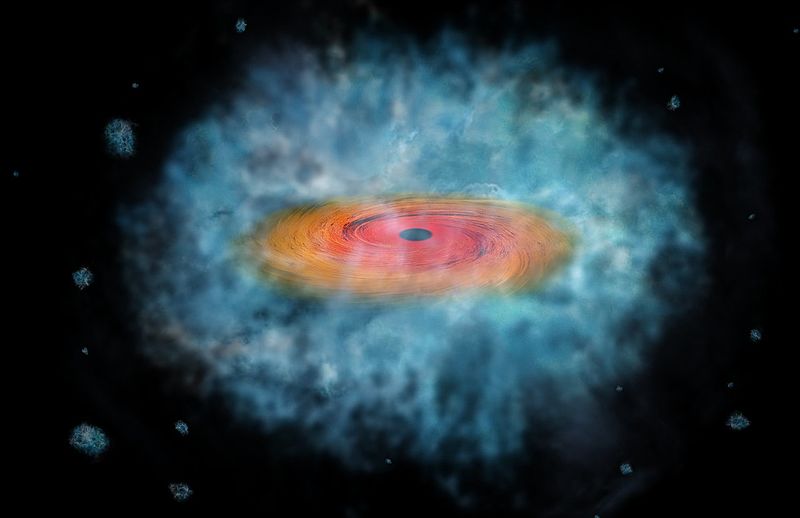For years, scientists have been trying to study black holes. What we today know about them is that black holes are basically regions in space where gravity is so strong that even electromagnetic radiation cannot escape. Over the years, many astronomers and scientists have come up with their theories regarding black holes.
Renowned cosmologist Stephen Hawking believed that they exist and it will take mankind many years before they truly understand their existence. He made his theoretical argument in 1974 and the discussion remains relevant even today. So let’s dig deeper and try to understand what black holes are and what their significance in space is.
History

The concept of black holes is not something new. Infact, the earliest claim was made in 1784 by astronomical engineer John Michell. He was of the view that there is a probability of a body being so strong that even light cannot escape from it. He continued to claim according to his studies and calculations that such a body can only be formed when the diameter of a star exceeds the diameter of the sun by a factor of 500.
Plus, these non-radiating and supermassive bodies can be detected through their gravitational effects on visible bodies nearby. Modern physics does not agree with Michell’s viewpoint even though the majority of his findings have been supported by research studies of the 21st century.
The Concept of Black Hole-Like Object Has Been Around For Centuries
It was thought by many that Albert Einstein coined the term “Black Hole”. It was actually Princeton Physicist John Wheeler who came up with the term in 1967. Albert Einstein only developed the theory of general relativity while Karl Schawrzchild uses the equations to prove their existence.
Later on, Schwarzchild came up with the Schwarzchild Radius. This basically determined the minimum threshold required for a mass to collapse into a black hole. According to this observation, any mass is capable of becoming a black hole provided that the condition is met. Following the theory, if the earth was squeezed in a small radius of 8.8 mm, it would turn into a black hole.
However, even before Einstein or Schawrzchild, John Michell and Pierre-Simon Laplace carried out their own studies and suggested the existence of an invisible star. However, their results differed from others since they used Newton’s laws instead of Einstien’s theory of general relativity.
General Relativity
It was Albert Einstein who proposed his theory of general relativity in 1915. Even his earlier studies highlighted the fact that gravity does affect the motion of light. Several months later Karl Schwarzchild found a solution to Einstein’s field equations, describing the spherical mass and point mass gravitational field. Following Schwarzchild, many physicists stepped forward and presented their arguments, most of which were not well-understood at the time. It would take years until people could properly understand Einstein’s theoretical argument.
Black Holes are Practically Invisible
The biggest factor surrounding black holes is that they are practically invisible. The reason is that the gravitational pull is so strong that there are no photons present to image the black hole as an object. Hence, the term black hole.
However, that does not mean that black holes are not detectable. Astrophysicists have been able to detect their presence using a stream of energy or pulling energy from a ripped-apart star. It has been observed that the gas molecules start circling the black hole and produce powerful X-rays. At the same time, by observing the motions of the stars, researchers can also detect the existence of black holes in a particular area.
This is How Black Holes Look Like
In April 2019, a huge breakthrough was made when a collaboration of International scientists was able to capture an image of the black hole. The researchers imaged the event horizon of the black hole to be more precise. The final image was produced by gathering data and observations all over the globe and then combining to create a virtual telescope that was as big as the earth.
It was a significant accomplishment of the decade since it was assumed that black holes could not be visibly seen. Capturing an image has allowed scientists to study and dig deeper into why do they exist in our outer space.
Black Holes Can Be Of Gargantuan Proportions
Based on their mass, black holes are classified into three different types. Stellar Black holes are formed when a large star runs out of fuel and strikes into a black hole. Originally, all black holes begin small but grow in size by consuming matter from their surroundings.
Supermassive black holes on the other hand feature hundreds of thousands to billions of solar masses. As compared to stellar black holes. Supermassive black holes are formed in several ways. For instance, a small black hole might run into a large gas cloud. Additionally, hundreds of thousands of tiny black holes might also merge to form a mammoth black hole. Finally, a group of many stars can collapse together and form a supermassive black hole.
Then there are intermediate black holes that have just been discovered recently by astrophysicists from NASA. The intermediate black holes contain masses that are between stellar and supermassive varieties. These black holes were discovered back in 2014 and contain mass ranging from a few hundred to a few hundred thousand suns.
There is a Black Hole Four Million Times Bigger Than the Sun
Physicists suggest that virtually every galaxy has a supermassive black hole. On average, the black hole is usually millions of times bigger than the sun. For example, our local black hole exists in a region called Sagittarius A* and is positioned around 26,000 light-years away from the solar system. In other words, it is around 4 million times bigger than the sun and nearly one million times bigger than the earth.
Objects Falling Through a Black Hole are ‘Spaghettified’
The very center of a black hole features gravitational singularity. This is a one-dimensional point where a huge mass is turned into an infinitely small space. Both gravity and density become infinite and so do the space-time curves. Even the laws of physics are not able to understand so much infinity.
Therefore, equations suggest that an object is ‘spaghettified’ as it falls into a black hole. If a human was to fall into a black hole, they would only see distorted images due to light bending. Eventually, ripped apart object disappears into singularity upon losing dimensionality.
Final Word
The proof suggesting the existence of black holes, especially the image captured in 2019 means that there is a lot out there that needs to be explored. However, science has progressed a lot from just theories to determining and identifying the characteristics of black holes. Since these bodies are quite far away from planet earth and potentially dangerous as well, only time can tell what other secrets they hold.





